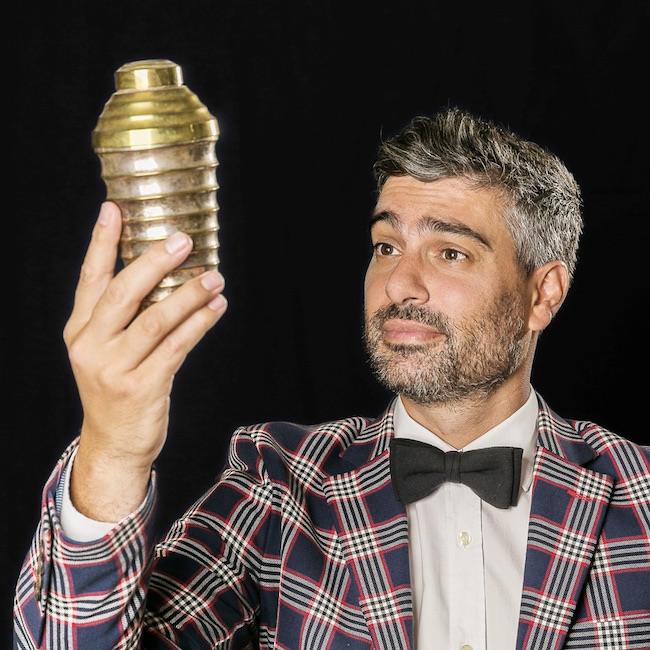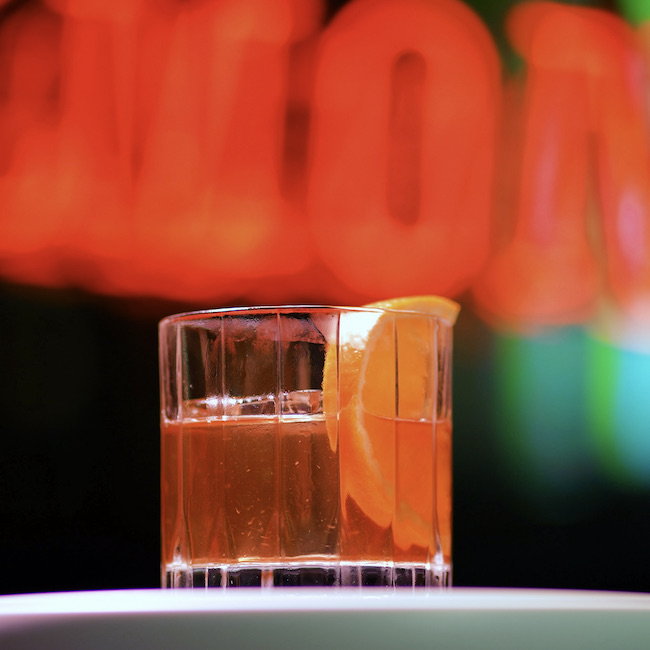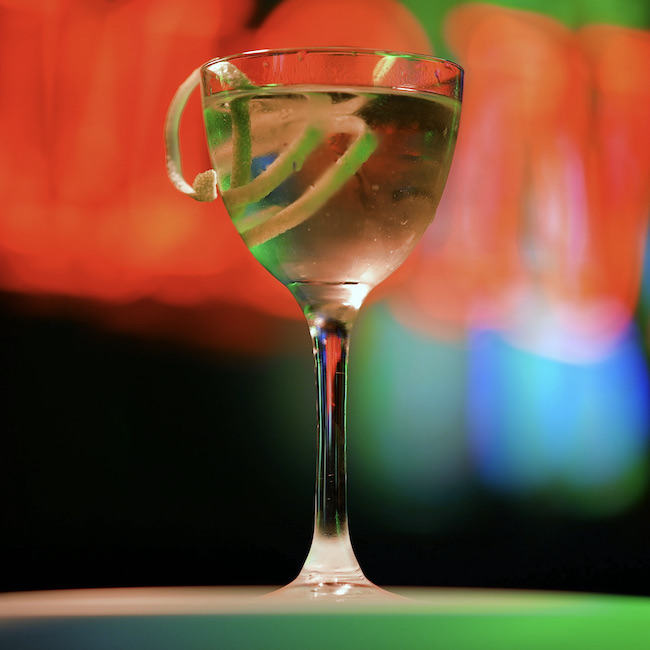.png.transform/rendition-xs/image_image%20(1).png)
Mixed, Shaken and Fine: Avant-Garde Cocktails made with Spanish Beverages
Bartender Diego Cabrera, who runs one of the world's best bars, explains how he uses local products in his creations.
Sherry brandy as the base of the Sex Apple cocktail, Catalan vermouth in his Carnaval cocktail, Amontillado sherry in the Old School Funny cocktail... The menu at Salmón Gurú, the temple of cocktails created by barman Diego Cabrera in Madrid, features decidedly Spanish drinks and gives character to one of the best bars in the world, ranked 24 on the most recent The World's 50 Best Bars list and received the Michter's Art of Hospitality Award, which is part of the same ranking, in 2021. It's a true temple of mixology.

Barman Diego Cabrera/@Diego Cabrera.
"At Salmón Gurú, we work with a lot of Spanish products because we love them. Additionally, we receive international clients who want to try local drinks and even end up taking bottles of the ones they like the most back home with them. There are also Spaniards who are surprised to find cocktails with ingredients such as pacharán, a traditional liqueur from Navarre obtained by macerating sloes. They say things like, "Wow, this is what my grandfather used to drink," but in the end they love the flavor it adds to the cocktail," says Cabrera, who is originally from Argentina but came to Spain 20 years ago, only to become the leader on the national cocktail scene.
For Cabrera, using Spanish beverages in cocktails makes perfect sense because, "When you get to know them, you realize that they're top quality products, like brandy de Jerez, for example. That's the only secret: the rest depends on the bartender having the right knowledge to mix them with other ingredients and make the formula work. I tell my team: "These are very worthwhile products and we need to fall in love with them and make our customers fall in love with them too. We shouldn't undervalue what we have within our reach."
A "Made in Spain" cocktail menu
Cabrera recently created a list of cocktails in which Spanish beverages play an essential role: "Working in particular with Spanish products was a challenge for me as I usually include ingredients from all over the world, and I have to admit that the result has been incredible. The cocktails have turned out great." One example is Modern Times, in which he mixes brandy de Jerez, red vermouth from Reus (a Spanish town where vermouth is the traditional beverage of choice), pacharán from Navarre and a slice of Valencian orange. "In a mixed drink like this, which combines different alcohols, playing with quantities is key, but the drinks help you in a natural way. Pacharán has a very intense flavor and it has a sweetness, with the result that you don't have to add anything else. Its fruity tone is tremendous: pacharán would even work in a tiki cocktail," he says.

Modern Times Cocktail/@ICEX.
He insists on highlighting the enormous quality of Spanish drinks. "Orujo, a distilled drink with a high alcohol content and made from grapes, is an excellent ingredient in cocktails. I'm sure that if we were to carry out a blind tasting with customers and different distillates, the result would surprise us because the Spanish product would always come out on top," he adds. Cabrera has experienced this battle against prejudice for local products with items such as "a liqueur made from Spanish aniseed that I included in one of my cocktails. People didn't order it because they thought it was an old-fashioned drink, but when they tried it, they loved it! We have to learn to appreciate more what is ours, what is part of our tradition."
Lesser known but high quality beverages
Another of Cabrera's cocktails prepared with national products is a Gimlet, in which he mixes Mahón gin (made since the beginning of the 20th century) from the Balearic Islands with elderflower liqueur, lime cordial and banana wine from the Canary Islands. How does Balearic gin differ from London Dry gin? "If you try it, you'll find a very characteristic flavor due to the botanicals. It has a herbaceous touch that gives a Mediterranean character to the classic Gimlet," explains Cabrera.

Gimlet Style Cocktail/@ICEX.
The other surprise in this drink is the banana wine from the Canary Islands, a discovery the bartender made during a trip there. "A colleague introduced me to it and I thought it was very fun. I didn't stop until I found it in Madrid so I could add it to this cocktail. I'd say it's almost addictive because, despite how it tastes, it's not a dessert wine but rather, a table wine, and it has an incredible banana aftertaste. I think it's fantastic to be able to raise awareness about these little-known products and this should be something we strive to do as experience creators."
In addition to drinks, Cabrera is determined to include ingredients in his cocktails which clearly reference a Spanish territory, immediately transporting the drinker to a specific place. He does this with a cocktail called Dulce Encuentro, in which he combines muscatel, cucumber, pineapple, mint, Catalan cava and honey from Extremadura; and in Pasión Fresa, which is made with Valencian cava, passion fruit puree, strawberries from Aranjuez and sugar from Malaga. "I believe that anyone who's not using cocktails to represent and transmit a specific place is not mixing in line with current industry trends. For me, strawberries from Aranjuez and honey from Extremadura are elements that you include to talk about the place where you're having cocktails... The appeal lies in being able to 'taste' a country through cocktails and, at the same time, generate wealth for producers and processors of raw materials."
You can find the complete recipes of the six cocktails here.
And check the video recipes in this YouTube playlist!
Author: Javier Sánchez/@ICEX.

